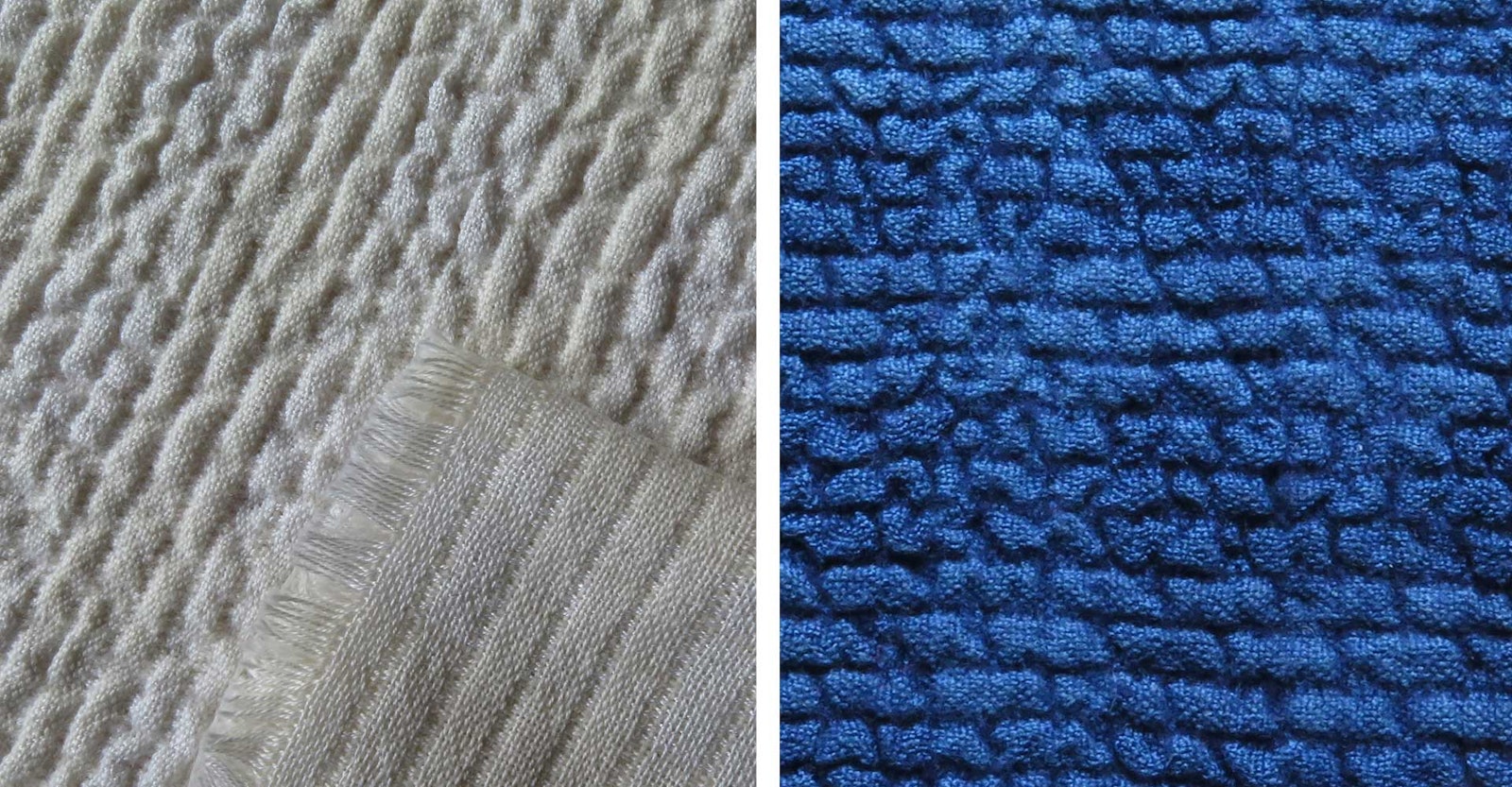In this article from Handwoven May/June 2022, Janet Phillips describes her process of using samples in a gamp to start an exploration of a weave structure. If you want to join in, the Project at a Glance information can be found at the bottom of this post.~ Susan
Structurally, distortion and deflection occur in cloth if there are areas of plain weave adjacent to areas of floating ends and/or picks. Two structures in which this happens are huck lace and waffle weave. Weft Bedford cord falls into the same category. This structure consists of horizontal stripes of plain weave with floating ends hanging behind them. The threading repeats every four ends in a classic straight-draw threading.
Two adjacent ends weave plain weave with the weft, while two ends just float on the back without interlacing with the weft. After a half inch or so of weaving, the four ends meet to weave two picks of plain weave. Then the ends that were floating on the back turn to weaving the plain-weave face of the next cord, while the other two ends are allowed to hang idly on the back of the cloth.
The distortion occurs during wet-finishing. The tightly woven plain-weave bands cannot shrink as much as the ends hanging on the back of the cloth. As these long floating ends shrink, they force the plain-weave stripes to rise into rounded cords.
In the four-shaft Colour and Weave Effect Sample Blanket from my book Exploring Woven Fabrics, Wefting 39 (Photo 1) is woven as a classic weft Bedford cord with a cotton warp and weft. Wefting 40, is the same cord, but for that sample, I changed the color of every 10th end to a blue cotton thread. These blue ends showed as squiggles of color on alternate cords after the cloth was washed (Photo 2).
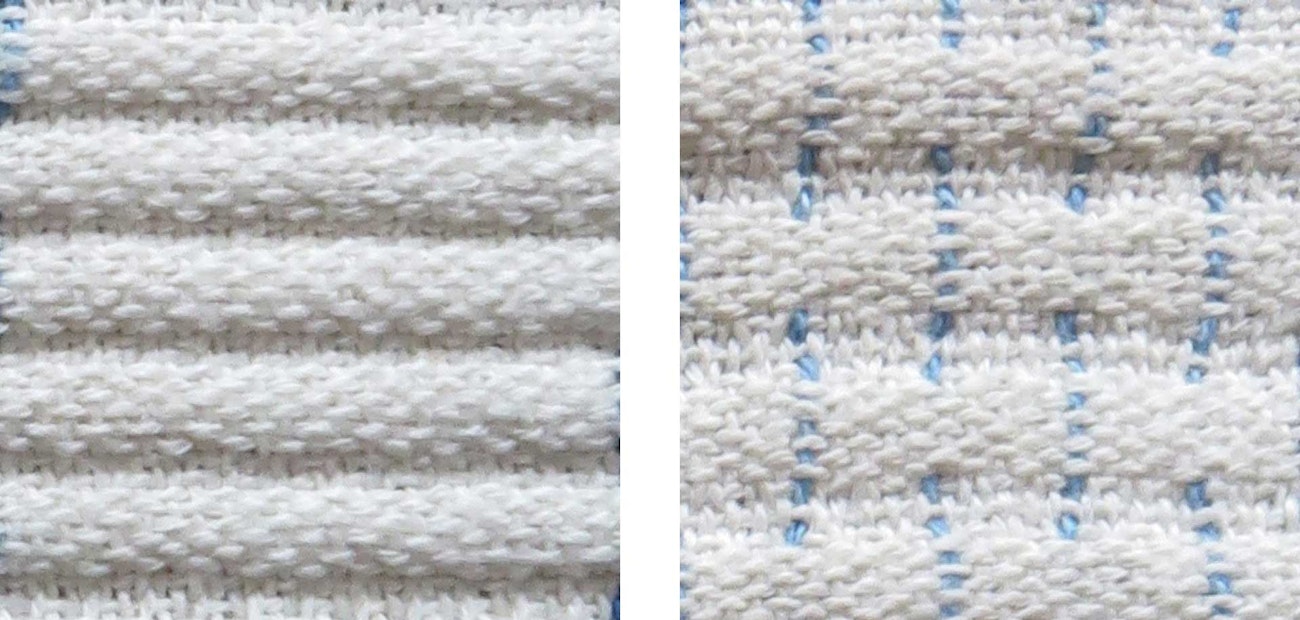
Left: Photo 1. Wefting 39. Right: Photo 2. Wefting 40.
I began thinking about what would happen if those blue ends were wool instead of cotton. Would they add more texture to the cords, as the wool ends would shrink more than the cotton ends? With this in mind, I sampled further, eventually producing Bedford seersucker.
The main warp is a fine 16/2 cotton. I used natural and bleached cotton to create a subtle check over the whole cloth. Between every 20 ends of cotton, I placed 2 ends of 2/24 worsted wool (see the warp color order, Figure 1). I threaded a straight draw on four shafts across the entire warp (see Figure 2). I wove using a classic weft Bedford cord treadling with 10 cotton picks per cord separated by 2 plain-weave picks, using the same wool as in the warp.
On the loom, the cloth looked very bland (Photo 3), and the back even more so (Photo 4), but after washing in hot, sudsy water for about 15 minutes, the natural shrinking of the cotton caused the cords to rise, while the additional fulling of the wool ends created overall texture as shown in the fabric on the left in the header.
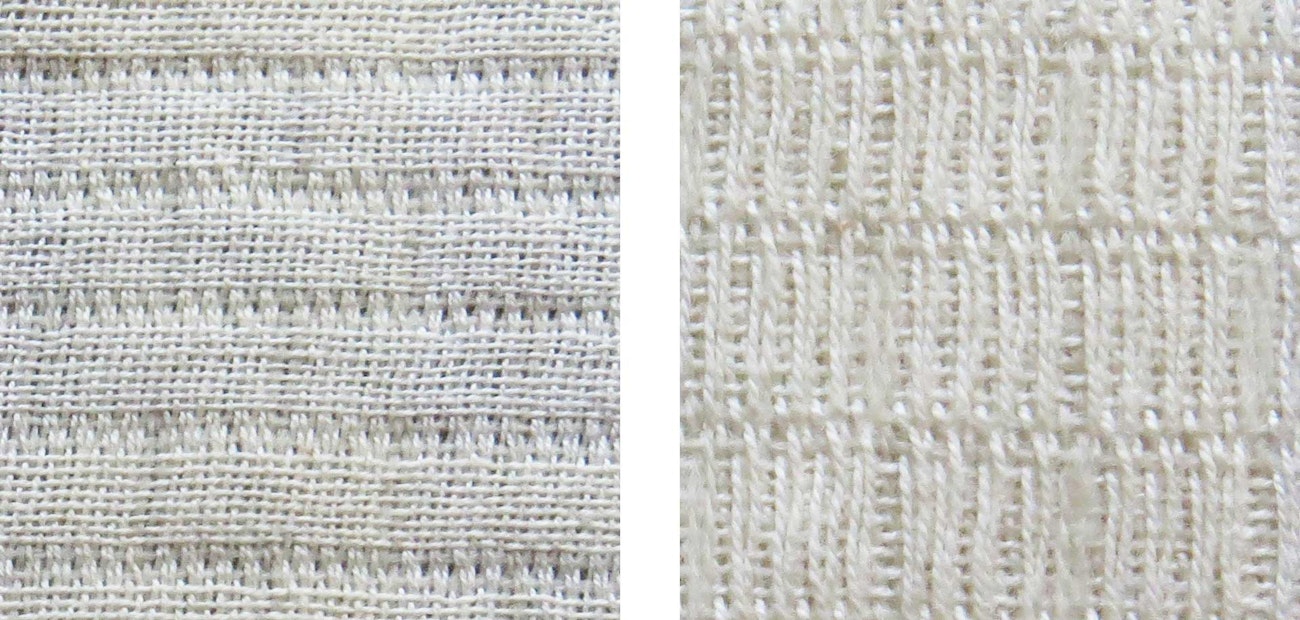
Left: Photo 3. Fabric on the loom. Right: Photo 4. Back of fabric.
I decided to dye the whole cloth in an indigo dyebath. The dyed wool was a slightly deeper color than the cotton. The natural and bleached cotton also took the blue dye differently (see photo at top right of header image above). And finally, I sewed the finished fabric into a boxed pouch (see below).
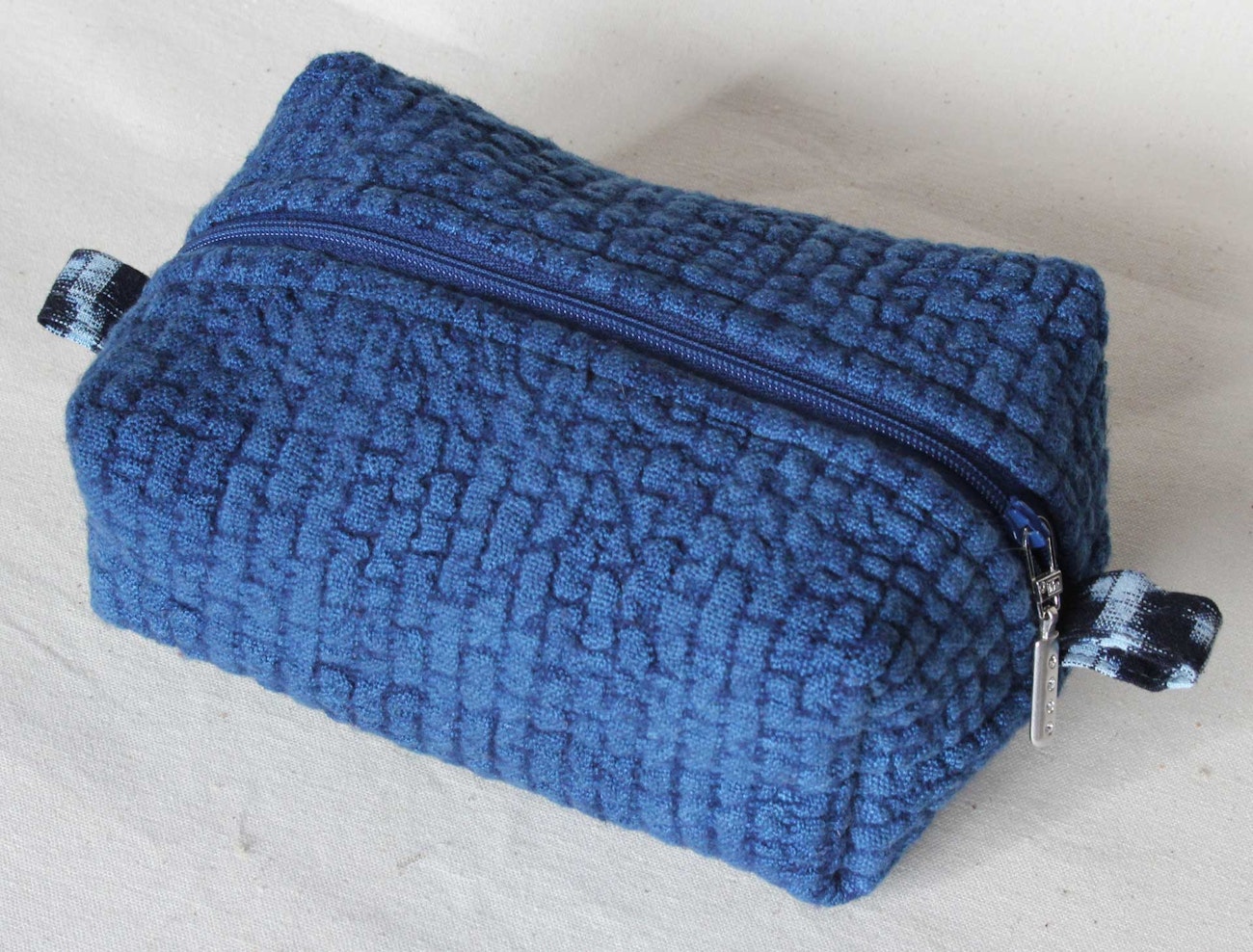
Boxed pouch
STRUCTURE
Weft Bedford cord.
EQUIPMENT
4-shaft loom, 19" weaving width; 10-dent reed; 3 shuttles.
YARNS
Warp: 16/2 cotton (6,720 yd/lb), natural white, 607 yd; bleached white, 600 yd. 2/24 WC wool (7,000 yd/lb), white, 107 yd.
Weft: 16/2 cotton, natural white and bleached white, 130 yd each. 2/24 WC wool, white, 52 yd.
Note: 2/24 WC wool is not available in the United States. A close substitute is Maine Line 2/20 (100% wool; 5,600 yd/lb; Jagger Spun). It is available from various retailers in 53 colorways. Please sample for sett and shrinkage.
OTHER SUPPLIES
Indigo dye; pouch sewing pattern and sewing supplies.
WARP LENGTH
728 ends 60" long (includes doubled floating selvedges; allows 3" for take-up; 29" for loom waste).
SETTS
Warp: 40 epi (4/dent in a 10-dent reed).
Weft: 20 ppi.
DIMENSIONS
Width in the reed: 183/10".
Woven length: (measured under tension on the loom) 28".
Finished size: (after wet-finishing) 15½" × 20". Fabric was sewn into the pictured lined pouch.
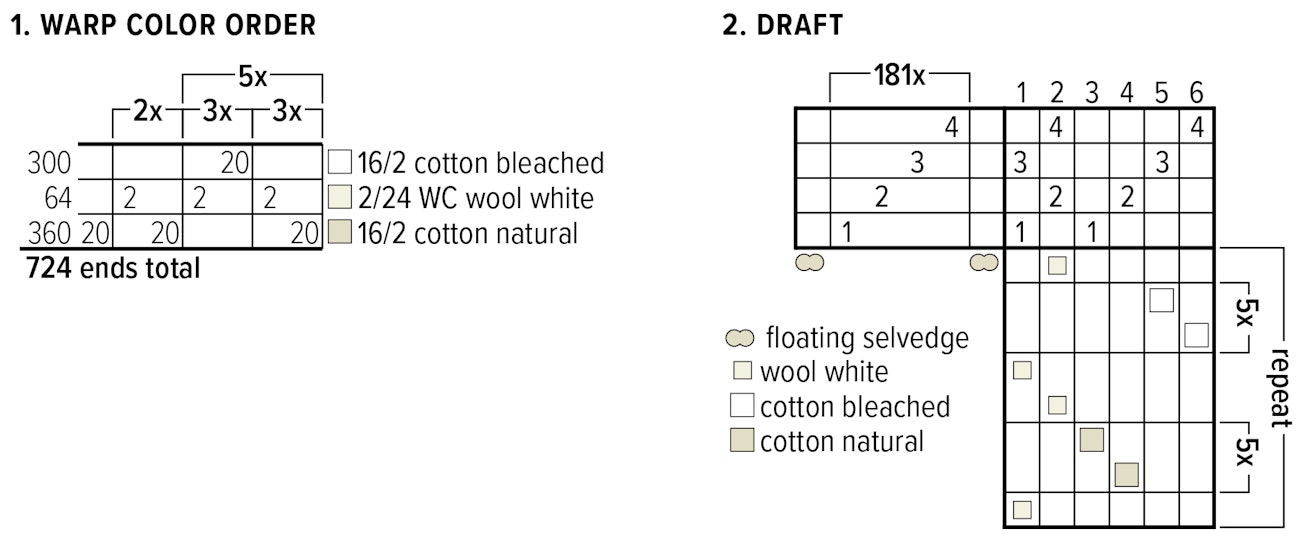
Weft Bedford cord is a very simple structure that is easy to weave. I would encourage you to weave a small sample with any yarns you have in your stash to learn about its construction and see how you could develop your own designs and ideas using it.
Resources
Phillips, Janet. Exploring Woven Fabrics. Somerset, UK: Natural Time Out Publications, 2020, 27, 44–45.
Janet Phillips has been weaving for over 40 years. She is a teacher, fabric designer, and the author of two books about weave structures and fabric design: Designing Woven Fabrics and Exploring Woven Fabrics. Visit her website janetphillips-weaving.co.uk.

